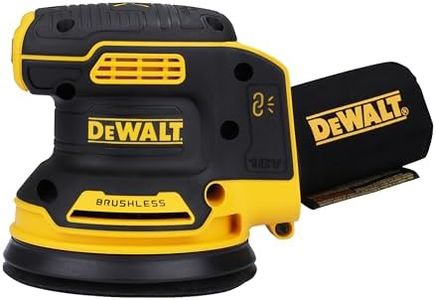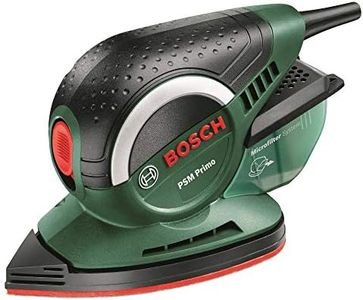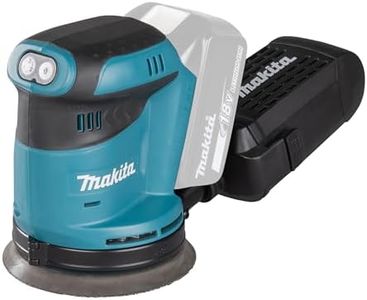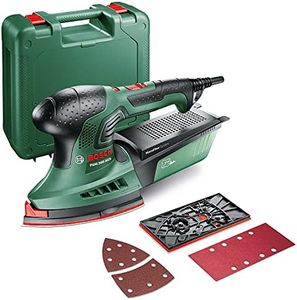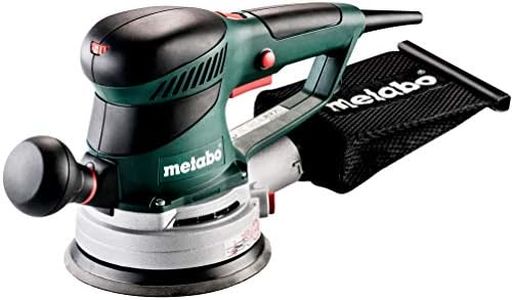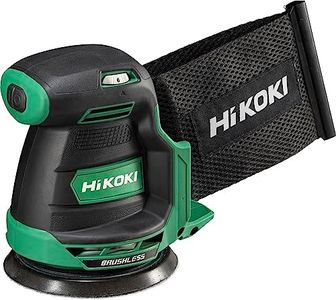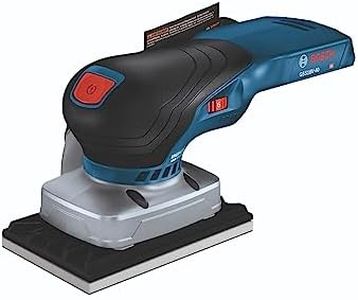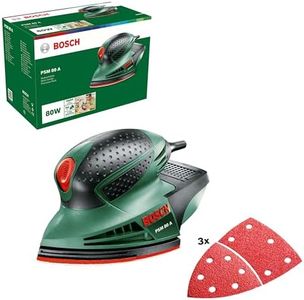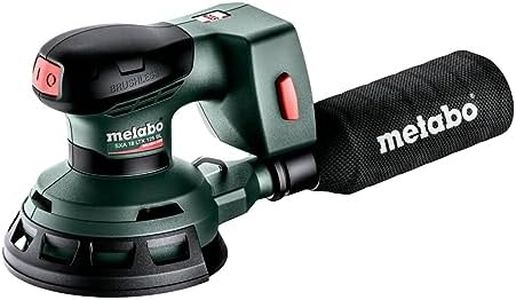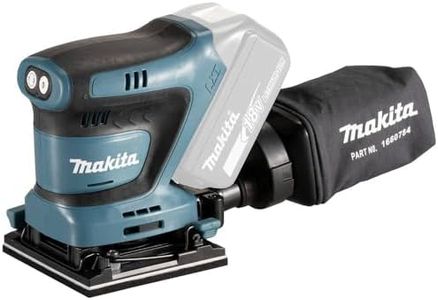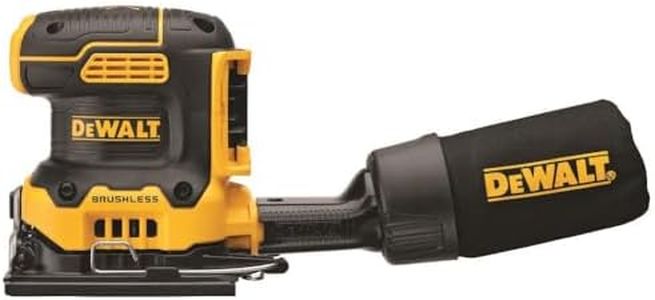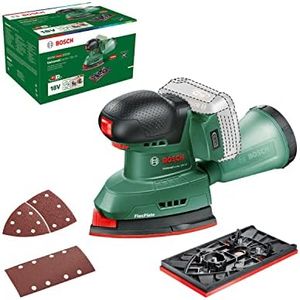We Use CookiesWe use cookies to enhance the security, performance,
functionality and for analytical and promotional activities. By continuing to browse this site you
are agreeing to our privacy policy
10 Best Palm Sanders
From leading brands and best sellers available on the web.Buying Guide for the Best Palm Sanders
Palm sanders are compact, easy-to-use tools perfect for smoothing surfaces, removing old finishes, and preparing wood or other materials for painting. Choosing the right palm sander will make your sanding jobs quicker, less tiring, and deliver a much better finish. To find your best fit, focus on the essential features that affect performance, comfort, and results.Power SourcePalm sanders typically come in two types: corded and cordless. Corded sanders plug into an outlet and give you consistent power for long jobs, which is important if you’re working in one place for a while. Cordless versions run on batteries and offer more mobility, letting you work in different locations and tight spaces, but usually have limited run time. If you’ll mostly work near outlets, a corded sander is practical. For outdoor or on-the-go projects, a cordless sander might be the right choice.
Motor PowerThe motor power, often measured in amps for corded or volts for cordless, determines how much work your sander can handle and how quickly it gets the job done. Lower power is fine for light sanding, touch-ups, or thin materials, but for tougher jobs or frequent use, a higher-powered sander will be faster and less likely to bog down. Think about your usage: occasional light jobs need less power, while frequent or heavy-duty work needs more.
Sanding Pad SizeThe size of the sanding pad tells you how much area can be covered at once. Small pads (usually around 1/4 sheet size) are great for detail work and tight spots, while larger pads (around 1/3 or half-sheet) cover bigger areas more quickly. If you work mostly on small crafts or furniture, a smaller pad gives you precise control. If you handle doors, tables, or big surfaces, a larger pad saves effort and time.
Sanding Action TypePalm sanders use different motions, mainly orbital or sheet action. Orbital sanders move the pad in small circles, reducing the risk of leaving marks and making it good for finishing. Regular sheet sanders move in straight lines and can be more aggressive. Orbital is best for fine finishing and detail. For paint removal or rough sanding, straight-line sanders can be more effective.
Dust CollectionGood dust collection keeps your workspace cleaner and protects your lungs. Palm sanders may have built-in dust bags, canisters, or even a port for connecting to a vacuum. If you often work indoors or value tidiness, a model with effective dust collection is a must. For outdoor jobs where cleanup is less essential, basic systems may be enough.
Comfort and GripSince palm sanders are held and guided by hand, a comfortable grip makes long tasks easier and reduces fatigue. Features to check include ergonomic handles, rubber overmolding, and vibration control. Try to imagine or test how the sander feels in your hand; if you plan on sanding for extended periods or have smaller or larger hands, comfort can make a big difference.
Paper Attachment SystemHow you attach the sandpaper matters for both speed and staying power. Some sanders use a clamp system; these are reliable but can take longer to change sheets. Others use hook-and-loop (similar to Velcro), which makes paper changes very fast and easy. If you need to swap grits often or want hassle-free setup, a hook-and-loop system may be best. For simple, occasional use, clamps are perfectly serviceable.
